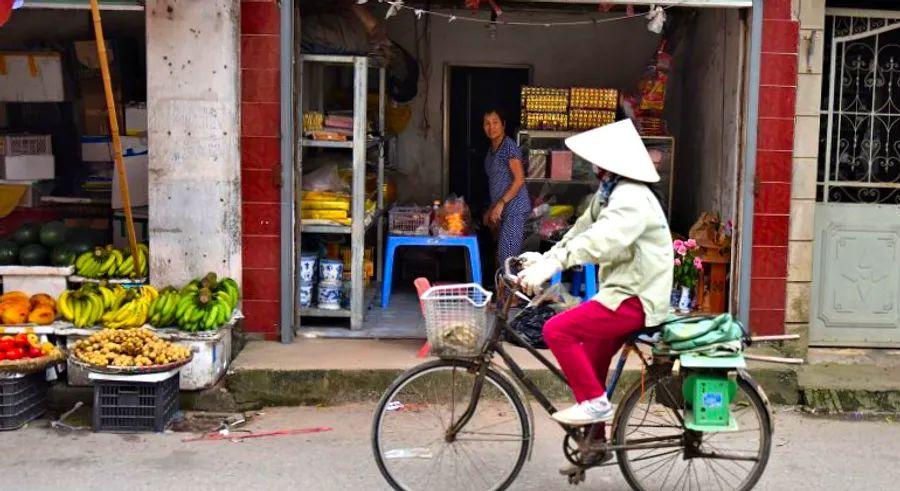Dong Ngac: Hanoi’s Scholar Haven

A reverence for turtles, a legacy of royalty, a hall shaped like a dragon, and a deep scholarly heritage – these unique elements define one of Hanoi’s hidden gems.
Located on the fringes of Hanoi, far from the usual tourist spots, lies Dong Ngac – a thousand-year-old village of intellectuals that has remained largely untouched by time.
As Hanoi has rapidly transformed in the last two decades, many of its ancient villages have either disappeared or been overhauled beyond recognition, losing their authentic charm.
But Dong Ngac has managed to preserve its original character, making it an especially captivating destination for travelers seeking something more genuine.
The village is framed by weathered stone gates, with old French-Vietnamese architecture lining its winding streets. Market vendors in conical hats bustle through the lanes, while children play near the 17th-century Tu Khanh Buddhist temple.
A Sacred Sanctuary

Covering more than three hectares (around 323,000 square feet), Tu Khanh temple is a serene sanctuary, featuring lush gardens, shaded courtyards, intricate pagodas, and grand pavilions.
The buildings are primarily crafted from dark, durable ironwood, with elaborately carved eaves resting beneath steep, terracotta-tiled roofs.
One of the first sights awaiting visitors in the temple’s expansive, well-maintained grounds is a stone statue of a crane perched atop the back of a turtle.
For centuries, Hanoi residents have revered turtles. In local legend, these ancient creatures symbolize longevity and are regarded as emblems of Vietnam's enduring victories in its struggles for independence.
This statue is just one of over 50 stone and metal sculptures scattered throughout Tu Khanh, a temple originally constructed in the 1650s.
Among these monuments are three large brass bells cast in the early 19th century and several stone steles, each dedicated to Buddhist deities and notable scholars born in Dong Ngac.
A Legacy of Scholarly Achievement
Though small in size – with a population of just around 1,000 people and covering less than a square kilometer – Dong Ngac has produced an impressive number of high academic achievers, including many doctoral scholars in literature.
Notable figures from Dong Ngac include Pham Gia Khiem, who served as Vietnam's deputy prime minister from 1997 to 2011, and Hoang Tang Bi, a respected writer and social reformer of the early 20th century.
Even today, families in Dong Ngac compete intensely to nurture the brightest minds, striving to raise the most accomplished students.
Dong Ngac’s reputation for producing eminent scholars has earned it numerous royal honors, dating back to the Le Dynasty period (1428-1788) in Vietnam.
Dong Ngac's literary heritage is even reflected in its architecture, with book motifs carved into the old gates that mark the entrances to each of its four villages.
Within these hamlets are nearly 100 homes, some dating back to the early 1600s. As you wander through the labyrinth of narrow lanes, the intricate stone and woodwork of the houses captivates the eye, while locals greet you with smiles, offering specialties like fragrant lotus tea and Banh Gio rice dumplings.
The Dong Ngac Communal House serves as the heart of the village.
For nearly four centuries, this complex has hosted Dong Ngac’s most important gatherings and served as a place of worship. Built in the early 1600s, it was designed to resemble a dragon’s head when viewed from above. The ironwood prayer hall represents the dragon’s skull, the main gate its nose, and the two wells symbolize its eyes.
The central hall is home to a valuable collection of Le Dynasty artwork, depicting scenes of Vietnamese agriculture, trade, fishing, craftsmanship, and, of course, literature.
Each day, the people of Dong Ngac gather in the grounds of their Communal House to offer prayers not only to Buddhist deities but also in tribute to the scholars who helped shape the village’s esteemed reputation.
How to Get There
Dong Ngac is situated in the northern suburbs of Hanoi, just a 30-minute taxi ride from the city’s bustling Old Quarter.
On your way to Dong Ngac, make sure to visit the historic Phu Tay Ho temple and Van Nien pagoda, both nestled along the scenic shores of West Lake.

1

2

3

4

5
Evaluation :
5/5